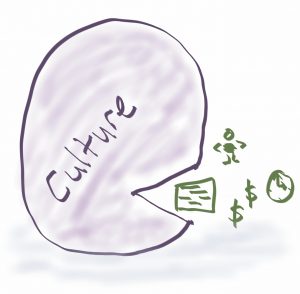Chatting with Steve and Tobbe – we were discussing refraction – light going into a prism and then splitting into a lovely rainbow. It is useful to slightly separate things and it can help us to clarify terminology.
A good example is the term Product Management – I was asked for a definition – so my first place of reference was ‘Escaping the Build Trap’ by Melissa Perri – with an excellent description of the role of a good product manager. This helped a lot – and when I looked into the situation a bit more, I realised that there was more to it. In conversations, not only did we start mixing together the terms Product Manager and Product Owner, but there was something else that was more than the role.
The landing point was to split it out into a few different facets; Profession, Role, Skills and Process – there could be other facets – these were the helpful ones for the recent conversations.
The Profession of Product Management grew from marketing and brand management and has evolved as organisations place more focus on Customer experience and the technology supporting that experience. In some places your career could take you through a range of product management roles all the way up to CPO – Chief Product Officer.
The Role of a Product Manager is to be able to articulate the ‘why’ of a product or feature so that the various teams can build the ‘what’. There is a lot more to it than this – but this is also where it is useful to split out the role from the skills and process facets.
The skills of Product Management need to be performed by many roles. There is the skill of stakeholder engagement to understand needs, goals and drivers. Being good at this skill means that the skill of prioritisation gets a bit easier. Then there are other skills such as data-driven decision making – all of us could use some of these skills in our work activities and we certainly should develop enough of these to be able to understand the outcomes we are aiming for (not just getting the bit of work done).
Product Management in Processes was a bit of a surprise when I noticed it. If we think about large organisations that allocate a certain percentage of time to innovation, this is an example of it. The organisation has prioritised innovation – allocated effort (which is time and therefore budget) with the outcome being to identify and develop new opportunities. The decision about the amount of time to dedicate and the level of priority is a product management decision that has been adopted as part of the regular planning and scheduling process. I’m certain that there are other aspects of product management that we could embed into processes and I will be looking for them.
I have previously blogged about the gradients of misinterpretation – those are still there, in this example there are gradients between one ‘end’ of the definition of Product Management and the other ‘end’. The point of this post is that is can be useful to put a definition through a ‘prism’ and split out some of its aspects or facets into discreet chunks.




